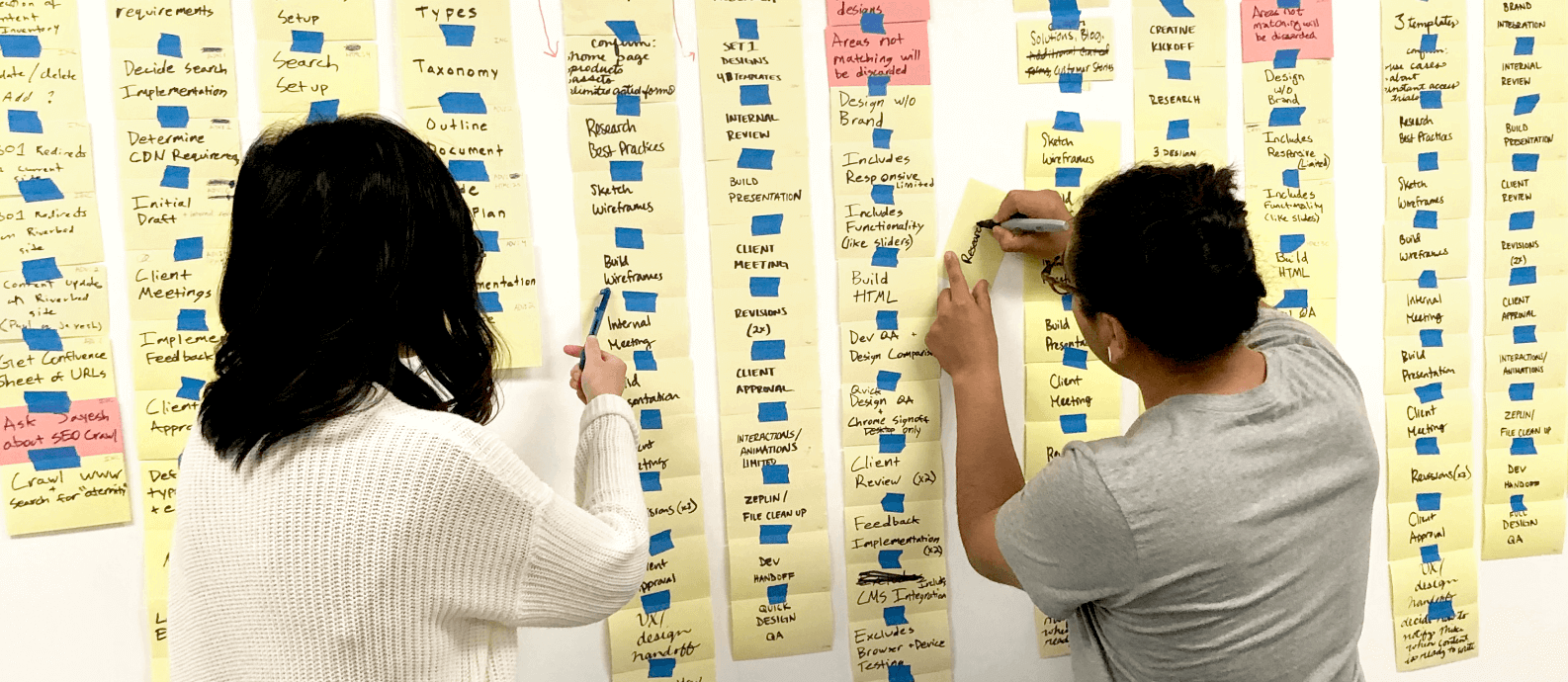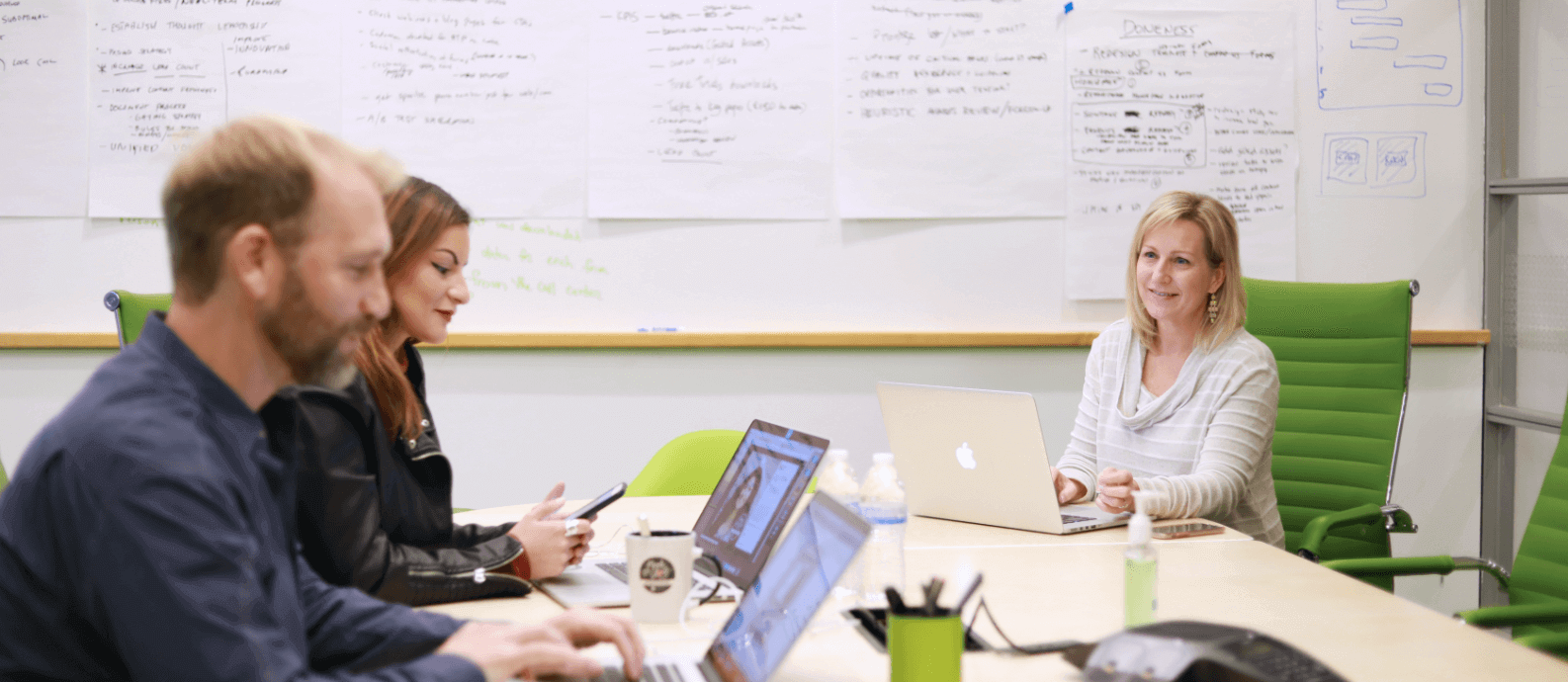Every organization faces challenges when it comes to time management. But juggling tasks amid tight turnaround is especially common in the fast-paced world of B2B marketing. Companies in our industry pay top dollar to be first to market, leaving no time for excuses, inattention to detail, or passing the buck. But although this is our undeniable reality, most marketing leaders have at some point had the displeasure of working with an agency project manager who failed to make good use of their time, money, and other resources. It’s unfortunately such a common issue that we’ve developed strategies that we use to help cross-functional teams avoid the major roadblocks to effective project management:
- Changes in timeline without a logical explanation
- Role confusion and overlap
- Communication gaps and failure to deliver key information
- Shifting priorities that result in major scope changes
When Driving the Project Schedule, Transparency is Everything
The first critical component in effective project management can be kind of a touchy subject. But it’s hard to overstate the importance of maintaining openness and transparency at every phase of the project. When everyone involved has a deep level of visibility into the process, it makes it easier for individuals to own their roles and switch gears with agility. The result is a smoother project pace and infinitely better outcomes.
And while transparency is largely a people issue, it’s also important to maintain transparency in the software and other tools your teams use. Choose tools and programs that actually enable transparency by making it easy for teams to collaborate, share updates, and forward tasks in a timely manner. At Clear Digital, for example, our project managers update Smartsheets on a daily basis, sharing calendar changes in real time to give everyone both big-picture and granular views of the project as it evolves.

That’s just one program in an ever-expanding range of project management tools, and it works well for our clients in combination with other tools and programs. When shopping for new solutions, it’s a good rule of thumb to purchase only from reputable companies who routinely update their products. Additionally, speed to learning and customizability should be the most important components. Regardless of which project management tools and platforms you use, be sure each member of your cross-functional team is fully trained to know when and how they will be expected to use them.
Effective Project Management Strategies Achieve Maximum Velocity Through Maximum Accountability
When individuals are accountable for their actions, it promotes responsibility and gives an overarching view of all the moving parts as well as the desired outcome. At Clear Digital, we’ve created a unique discovery process to build this essential level of role understanding and accountability into every client engagement. At the beginning of each project, we hold a Velocity Workshop—which you can think of as similar to a live-action brief—that helps all members of the cross-functional team take responsibility for:

- Understanding their role (and everyone else’s, too).
Clear Digital’s project management process starts with clearly delineating roles and processes. This ensures that both internal and external teams are fully trained upfront and entering the project with a clear understanding of what they need to do, and when and how to do it. It might sound simple, but our experience has taught us that a shocking amount of avoidable confusion can stem from teams jumping into a project before deciding who’s responsible for what. - Building in system accountability from day one.
As previously discussed, it hardly matters which tech platforms, software tools, or content management systems your team uses. What matters more is having the right notifications and pathways in place to trigger the next steps in the process. Setting these parameters from the outset ensures that the right people are notified (with plenty of lead time to react appropriately) as the scope of the project inevitably shifts and changes. - Empowering clients to take action.
As veteran project managers, it’s our responsibility to educate you on the systems and processes we use to achieve great outcomes. But education without empowerment is futile, and that’s why we also work to imbue you with a sense of authority as you navigate tasks within the project scope. This is another way we reinforce accountability and avoid lapses in communication and task completion that are known to derail even the most solid project timeline.
it’s our responsibility to educate you on the systems and processes we use to achieve great outcomes.
Effective Project Managers Can Be in Several Places at Once
When it comes to effectively overseeing a project from start to finish, the third and perhaps most essential component is agility. Project managers serve as the eyes and ears of the operation, and effective oversight has a lot to do with guiding conversations as they happen throughout the course of the project. With clients focused on the task at hand, project managers can monitor process observations and learning opportunities as they arise throughout the process. A good project manager will note these items in order of importance and keep a “wish list” for teams to revisit at a more opportune time.
Ongoing Feedback Is Critical—Even At the Close of a Project
That brings us to the final task of project retrospective, which is another one that falls squarely on the project manager. At the close of every project, it’s important to engage the entire team in a look back at what worked, what didn’t, and which approaches should be tweaked for future project engagements.

This ongoing feedback loop is critical to everything we do at Clear Digital, from the software we purchase to the industry best practices we employ. Our processes are informed by years of experience serving the needs of diverse clients, whose feedback we rely on to continually incorporate intuitive tools and processes that help projects run smoothly.
And while we take pride in our ability to listen and accommodate requests as they arise, our biggest successes are underpinned by proactivity. By starting each engagement with a clear view of the goals, risks, and opportunities—and maintaining a culture of open communication throughout—we are able to work as trusted extensions of your team, helping you feel empowered to successfully achieve your project goals.
If you’d like to learn more about teaming up on your next project, drop us a line, we’d love to hear from you.






